When it concerns the maintenance of your vehicle, wheel bearings may not be one of the first things that spring into your mind, but they are truly important in giving you a smooth ride. These tiny components are crucial, as they bear the weight of your vehicle, lower friction, and help with the smooth rotation of the wheels. But like any other part, they are also prone to aging and getting problems over time. Failing to attend to the signs of wheel bearings that are on the verge of failing not only exposes your vehicle to more damage but also creates serious dangers while on the road. This blog is able to help you identify the issues early by outlining 10 glaring indications of impending wheel bearing failure, which allows you to ensure both the performance and safety of your vehicle.
What are the common symptoms of a bad wheel bearing?
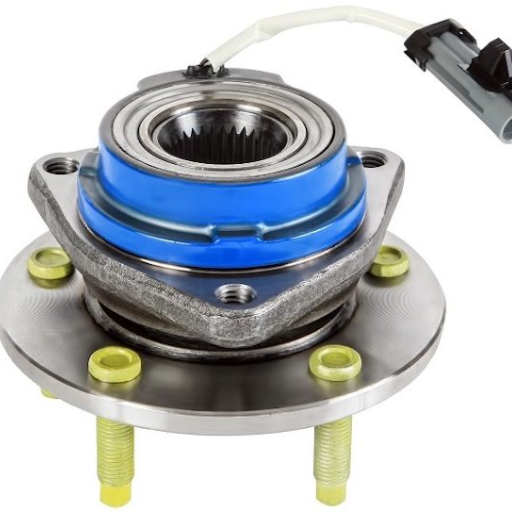
One of the most prevalent symptoms of a faulty wheel bearing includes hearing unusual sounds coming from the wheel region, such as grinding, humming, and squeaking. The steering wheel becomes shaky, and the tires are wearing out. A sort of loose or wobbly sensation is felt while driving as well. Sometimes, you would notice that your car tends to drift to either side or has a decrease in its handling capabilities. If these problems are neglected, they will get worse, which will increase the damage as well as the risk to safety. Therefore, diagnosing these signs and treating them as soon as possible is as important as looking after the performance of your vehicle.
Unusual noises coming from the wheel area
strange sounds originating from the wheel area shouldn’t be taken lightly, as they may indicate a problem. Grinding, clicking, or squeaking sounds may signal the existence of problems with the wheel bearings, brakes, or various suspension parts. I have witnessed many instances where paying attention to these noises at an early stage has avoided more complex repairs. Such inspections, as well as offering remedial actions to these sounds, help keep your vehicle in a safe condition or working to its potential.
Steering wheel vibrations at various speeds
steering wheel vibration at certain speeds can be attributed to unbalanced tires or possibly misalignment of wheels. We all know that at high speeds, even the slightest of imbalances get magnified resulting in a shaking steering wheel. Also, the condition of the suspension and steering components need to be examined, as well as worn-out ball joints and tie rods. The first thing I advise is that you take a close-up look at the tires and get balancing done since this seems to be the case. Dealing with these vibrations as soon as they are noticed also serves to make your driving experience more comfortable while minimizing wear and tear on the vehicle over a lengthy duration.
Uneven tire wear patterns
Tires are always a safety concern when driving, which is why tire maintenance is very important. Throughout my years of working and debugging tire problems, I have come to learn that uneven tire wear is a very common issue that many people tend to overlook. One of the key factors concerning this problem is the reason why the tires are wearing out unevenly. So, to better understand this problem space, I have noted down a couple of points apart from others. Which I have dealt with as well:
- Tire Alignment – During every oil change, customers are informed to perform wheel alignment. This is because failure to do so will lead to radial disbalance, which abrades one face of the tire more than the other. Appropriate Alignment abstracts the risk of this happening.
- Incorrect Tire Pressure –Unusual and irregular wear patterns are also caused by excessive pressure and lack thereof on the tires. In the first case, the tires lose more of their inner surface, and in the latter case – the outer one. Keeping the recommended tire pressure stated in the manual of your car is important in preventing this from happening.
- Suspension Issues – Due to wear and tear, some of the suspended parts, like the shocks and struts or even control arms, may get damaged. This would also lead to radial disbalance and uneven wear of rubber on the tires. Rebalance that is inflicted on the tire due to fault in the suspension system would alter the mechanics between the road and the tire.
- Wheel Balancing – If the tires aren’t properly balanced, they are likely to induce vibrations. Not only do these lead to uneven wear of the tires, but they may also lead to certain discomforts whilst driving (Which is obviously not good for the health of a driver). This is the reason why the tires need to be done correctly.
- Driving Habits – Some tire types are more prone to wearing out than others, so when one drives aggressively by sudden stopping or cornering, the tires are likely to wear out unevenly. On the other hand, driving smoothly at a constant speed throughout will result in the life span of the tires increasing and the rate at which they wear evenly amending.
- Rotating Tires –Finally, if you do not rotate your tires regularly, uneven wear patterns can develop. Tire rotation minimizes uneven wear and tear due to driving by equally distributing the wear across all four tires.
As in most cases, I always locate the defect cause for the abnormal tire wear and issue an appropriate recommendation. How often you have flat tires or how easily they wear out depends a lot on how carefully you observe the stated parameters and maintenance.
How can I tell which wheel bearing is failing?
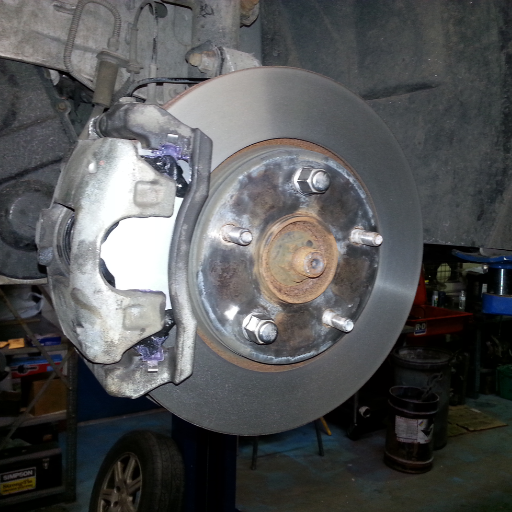
Identifying a wheel bearing that is going bad usually comes down to identifying patterns while driving. In my case, the most prominent feature that I notice is a pitched growl or humming that appears to be more pronounced as the vehicle moves. To try and determine which wheel is affected, I pay close attention, during the turning action, if the noise shifts towards one side more than the other the other side’s bearing is usually the problem. For instance, if the vehicle is making a noise on the left side while turning right, it means that the left side’s bearing is going bad. Afterwards, I perform what is called a ‘play test’ where I lift the car and apply pressure onto each wheel after wiggling it free whilst looking out for excessive movement as this may indicate the presence of a defective bearing. Together with a proper test drive, these methods provide me with the right information regarding the condition of the vehicle so that any potential issue can be resolved before it is too late.
Identifying the source of noise while driving
A detailed examination of many variables provides accurate driver noise location. Such variables include speaking about when the noise takes place and where it occurs, for instance, when accelerating, when braking or at turning, or at a particular speed. It is also possible to examine wheel bearings, shifting sounds, and tire conditions. A structured approach provides an accurate diagnosis as well as helps to eliminate any further damage to the vehicle.
Performing a simple spin test on each wheel
A very effective and simple braking noise diagnostic tool that I often utilize is a spin test of the wheels. I usually begin a spin test by jacking up the vehicle and removing the weight from all wheels. After satisfying this condition, I spin each wheel while listening closely to sounds and feeling vibrations as the wheel turns. Ideally, the wheel should turn over easily with no sign of resistance, but If I observe any degree of grinding, wobbling, or an off-center spin, there is a problem, and it is most probably the wheel bearings or parts of the brakes. Moving on to more involved diagnostics, this simple test allows the user to gather important information.
Using specialized diagnostic tools
I employ cutting-edge tools and technology to assist me in identifying malfunctions using auto-diagnostic devices such as scan tools, multimeters, and more. For example, scan tools help us retrieve error codes and performance parameters from the dashboard computer and examine its functions in real time. Besides, such high-performance measurement devices and automatic digital multimeters allow electrical circuits to be checked for voltage drops and malfunctions. Thus, not only do these instruments minimize time expenses, but they also allow greater accuracy than if the investigation were solely manual in nature. The integration of this technology with my practical skills allows me to provide quality diagnosis and repair solutions for virtually any automotive problem.
What causes wheel bearings to go bad?
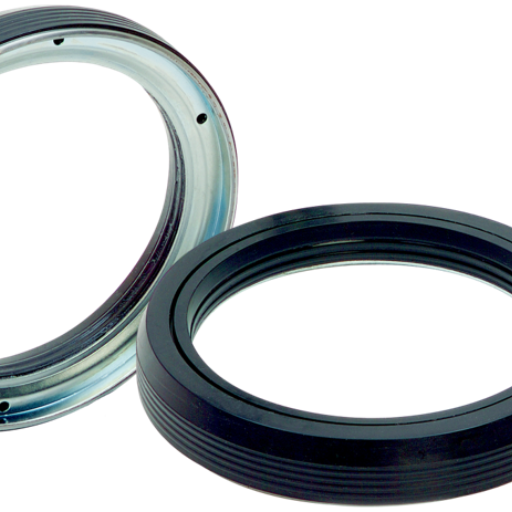
The primary focus of this research paper is the failure of wheel bearings, which are crucial to the automotive space. Research suggests that wheel bearing failure stems from multiple issues such as Incorrect installation, bad working conditions, excess water exposure, and, of course, debris. It is no secret that if a car is being operated on poorly constructed roads on a consistent basis, it will lead to the overloading of bearings and vice versa. And it is needless to say, the constrained use of a specific unit will have aging impacts on the entire system. Hence, opening the discussion toward maintenance, this is where timely checks can significantly prevent early malfunctions.
Impact damage from poor road conditions
I have noticed poor road conditions owing a lot for impact damage and being a common reason for wheel bearing problems, it does not come as a surprise that potholes, uneven surfaces, hitting curbs with sudden force may exert considerably high pressure on wheel bearings. Thereby causing internal failures such as pits and worn bearings, ultimately causing noise and vibration needed to be constantly monitored. Based on my experience, it helps to avoid these road hazards if possible and ensure frequent checks after a rough ride to help maintain your wheel bearing’s integrity.
Contamination due to faulty seals
Seals that are defective certainly have a part in the said scenario, which is that contamination is one of the main reasons for wheel bearing failure. Based on my experience, seals do work perfectly to keep the dirt water, and other contaminants out while holding the required lubrication within. Unfortunately, once these seals become damaged, cracked, or fitted inappropriately, they let harmful substances into the wheel bearing assembly. Given this context, contamination due to faulty seals can affect your wheel bearings in the following manner:
- Water Intrusion: Water intrusion happens when seals fail, and water begins to intrude into the wheel bearing assembly, leading to rust and corrosion of the bearings and the lubricant over time.
- Dirt and Debris Entry: When seals are faulty, this allows the road debris, dust, and other road grime to migrate into the assembly unit which leads to PM wear loss of the bearing surfaces due to relative movement between them.
- Lubricant Compromise: Grease has a time-effective life, and as this life extends, contaminants begin to mix with the grease inside, making it less potent, and when grease is gritty or has solvents, it fails to perform its friction-reduction duties entirely.
- Heat Buildup: Heat builds up due to the increased friction forces, and when the friction is increased, the contact area might overheat, which increases the damage to the bearings and can lead to complete failure if not taken care of.
To avoid problems such as these, I suggest that you carry out a regular inspection of your seals for replacements after any rough use, especially during and after driving on rugged roads or during extreme weather. It may appear to be a minor replacement procedure, but changing a seal will considerably increase the lifespan of your wheel bearings and avoid any more costly repairs.
Is it safe to drive with a failing wheel bearing?
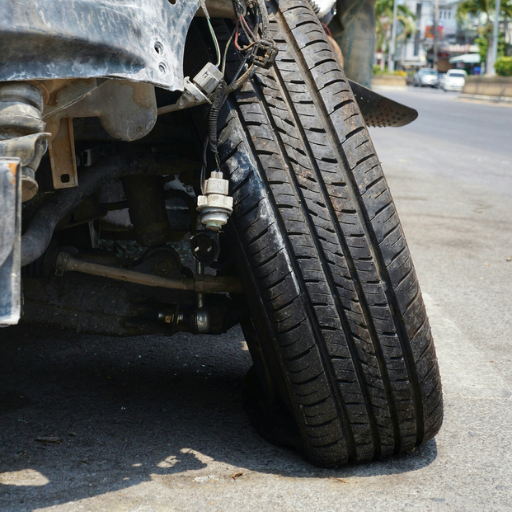
It is dangerous to operate a vehicle with a bad wheel bearing, and I would not recommend it. The stability of the vehicle’s structure and steering, as well as brakes, could be affected by such a bearing. The problem can eventually get worse to the point where the wheel may lock or come off while the vehicle is in motion. I have witnessed serious damage to other components and failed to resolve the issues on this problem, which made the repairs much more expensive and longer. Any indication of a bad wheel bearing, such as abnormal sounds, shaking, or too much free play, should lead you to visit your mechanic, as it will be advisable to minimize the risks.
Potential risks of continued driving
It is unsafe to drive with a damaged wheel bearing and act at high ratios. Assuming high speeds, my experience informs me that ignoring the situation can lead to situations where the wheel locks, hence increasing the probability of an accident. Also, if the bearing is on the verge of breaking down, it can create excessive heat and friction, causing a tire to blow out or wreak further havoc on the vehicle’s suspension. The longer you bear with driving in such conditions, the higher the likelihood of a tragic outcome—of both the car disintegrating and you, along with innocent pedestrians or other drivers, getting injured. I always tell my clients this.
How long you can safely drive with a bad bearing
The reasonable response would be that you should not operate a vehicle with a broken bearing. It would be plausible to argue that, in certain situations, it may be feasible to drive a short distance to a repair shop, but the risks are immense. The functioning of the bearing is crucial as it impacts the vehicle’s potential stability and handling, making it safe and controlled. Finding an answer to this issue must be emphasized for both your safety and your vehicle’s longevity.
Emergency measures for temporary relief
Envision a situation where a wheel bearing has gone bad and immediate repair isn’t possible or a wheel bearing needs redundancy and no parts exist that can be substituted. That situation seems dire. To that end, there are a few measures that one should take but these must be regarded as temporary measures only. First and foremost, ease off and reduce your driving speed. This lowers the stress on the ineffective bearing and lowers the chances of a larger issue. Slow down, don’t make sharp turns, and avoid driving through rough terrains as these would aggravate the already bearing problems. While on your trip, check the bearing for extreme temperature and noise at intervals. In case grease or lubrication is available, putting it on the bearing may decrease war but only temporarily, that isn’t a remedy. At the end of the day, the most correct step to ensure this issue is fixed is getting in touch with a mechanic and getting the part of the vehicle replaced.
How much does it cost to replace a wheel bearing?
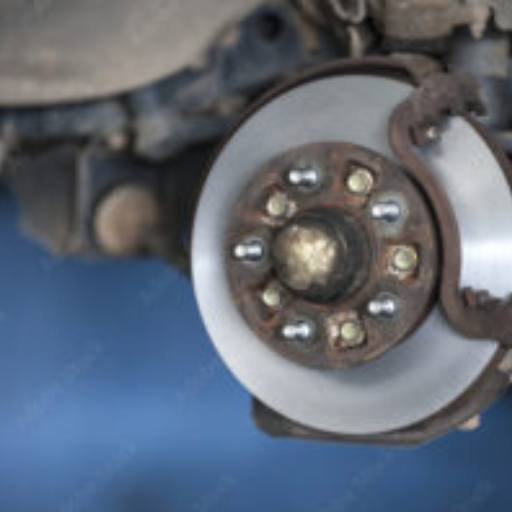
The price range can be approximately between $150 and $500 per wheel to change a wheel bearing, depending on factors like the type of car, the location where work is to be performed, and, further, if any other parts like the hub assembly also have to be replaced. There tends to be a sizable amount of their cost contribution due to labor charges, as the replacement of a wheel bearing incurs the use of special tools, which tends to take time. Always discuss with a reliable auto repair shop for a more accurate quote specific to your car.
Factors affecting wheel bearing replacement costs
In regards to the replacement of the wheel bearing, I have witnessed a number of factors that seem to affect the overall cost of the repair. First, the car you use matters a lot as owning a luxury or high-end vehicle comes with additional costs for parts. Also, the cost of the repair itself may differ from one car to another, for instance if only the hub assembly needs replacing one could consider the repair less complex. Another key service cost is labor, which varies from the locality as well to the garage. Last of all, the grade of the parts that need replacing is important; that is to say, addressing the problem with OEM parts is more costly but more effective. Quite frankly, it has always been my belief that knowing these aspects helps you make a good decision when you have to perform this repair.
DIY vs. professional mechanic pricing
The cost of replacing a wheel bearing can depend on multiple factors, and I’ll explain those to you.
When it comes to particular factors that influence the replacement of a wheel bearing, the following should be kept in mind:
- Make and Model of Your Vehicle – Some particular vehicles, particularly exotic and performance cars, have special or expensive parts, which means the replacement will be expensive too.
- Type of Bearing – Among wheel bearings, there are ball bearings and tapered roller bearings. Some are part of a hub assembly which is costlier to replace as compared to actually getting the bearing itself replaced.
- Labor Costs -The complexity of the work varies across the myriad of vehicles available. As an example, front-wheel-drive cars tend to be more labor intensive because of how the wheel assembly is positioned, and that increases labor costs.
- Availability of Parts – The wheel bearing is not common and has to be custom made; it contributes to the higher cost. Cost.
Now, about the big question—DIY vs. professional mechanic pricing:
On the one hand, the bearing assembly doesn’t really have much variation between the professional and the DIY’s in terms of pricing. You would be able to make a significant saving on labor costs too depending on whether you have the tools and skills necessary for it, that means having the time too otherwise it’s not worth it. A single bearing can cost anywhere from $50 to $200, depending on the type and brand. But not all skimming DIY sections are the best options especially when making performance modifications, we recommend having self-aware skills, machinal or otherwise.
On the opposite side, we have professional mechanics. It is worth noting that hiring them can be a lot costly, but thanks to them, the risk is significantly lowered, and the reliability is increased. The total cost usually covers a range that is as insignificant as $200 and as heavy as $500 or even more; inflation can account for that.
However, considering everything, if you are uncomfortable lifting heavy parts, you should hire an expert. Because you need to look at it this way, repairing the wheel bearing means safety and durability, and it is always worth the price!
Cost comparison for different vehicle types
In terms of the number of wheels, the wheel bearing replacement costs are about the same for scooters, motorcycles, and cars. The cheapest would be the standard sedan, costing around 200-300 U.S. dollars. For bigger SUVs and trucks, the cost goes up to a range of 300-400 U.S. dollars since they incorporate larger wheel bearings. But a specialized wheel bearing in a sports car will have a retaining cost of about 500 U.S. dollars or so, as this is a very high end vehicle. In addition to that, high component costs, part quality, labor costs, and local price differences also have to be considered if one intends to manufacture the vehicle.
Can wheel bearing issues affect other car components?
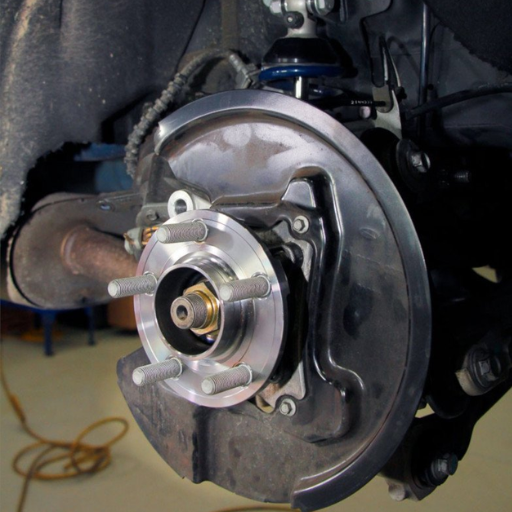
Certainly, issues with wheel bearings can greatly affect other elements in the vehicle. In my recollection, a wheel bearing that has started to wear out can cause extra strain on its neighboring components, such as the hub or axle, and even the suspension; if not addressed, it may result in uneven wearing of the tires and misalignment, which stirs up vibrations which in turn can stress out the braking system. It is important to notice and repair any wheel bearing issues as they arise so as to avoid a chain reaction of costly repairs and, most importantly, to maintain the vehicle in a safe condition while optimizing its performance capability.
Impact on brake system performance
A worn wheel bearing may be detrimental to the brake system in that it affects the system’s stability and introduces excessive vibrations. Such vibrations may also lead to unbalanced application of the brakes, brake system efficiency loss, as well as prolonged stopping distances. Timely intervention on the damaged wheel bearings is crucial in order to enhance brake performance and safety in the vehicle.
Potential damage to the wheel hub and axle
In my professional view, I can argue that the neglect of a failing wheel bearing must be considered a danger to the wheel hub and the axle sometime in the future. The deterioration of the wheel bearing increases the load on the wheel hub assembly, causing over-stressing, wear, and even deformation of the hub components. In the same way, the axle may also be sustained over stress, which can lead to misalignment or damage to the drivetrain. Wheel bearing should be prioritized at their initial stages so that the wheel and the entire vehicle do not suffer from the repair costs and maintain flawless working.
Effects on steering and suspension
An expert would diagnose that the steering and suspension can be greatly affected by a bad wheel bearing. It can impair the steering performance via looseness or introduce unwanted vibration into the steering which will make it more difficult to control the vehicle, especially in high velocity scenarios. As a consequence, the suspension system may be forced to bear stress in an irregular manner, resulting in the early failure of its parts. Even more serious, if wheel bearing problems are allowed to develop and worsen, the stability of the vehicle can be compromised, and so the safety of the driver becomes at high risk.
How often should wheel bearings be replaced?
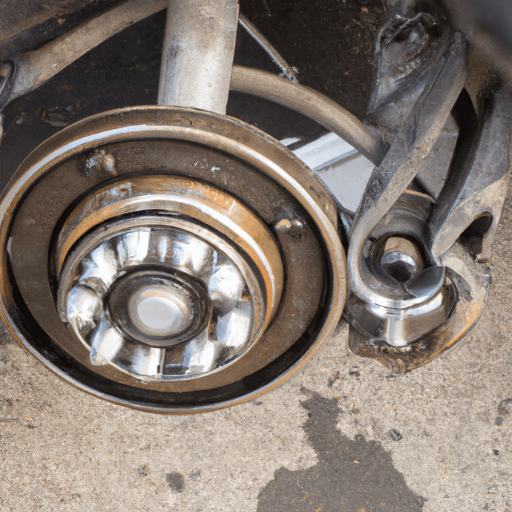
To the best of my knowledge, given that wheel bearing inspection is fairly inexpensive, I would suggest doing it at the very least every year, if not more frequently than that. The expectations for when that bearing is to be replaced is not fixed, however, it is a good rule to replace bearings every 85000 to100000miles For Off Road vehicles or vehicles regularly carrying heavy loads, the replacement timeline may shift forward. One should always make sure to check the above as well as other signs of wearing, such as strange sounds or pulling detection problems. That way, you can protect yourself from larger repair amounts in the future.
Average lifespan of wheel bearings
the factors outlined below are key in determining the lifespan of wheel bearings, and they can greatly vary. The general consensus, though, is that given proper installation and use, wheel bearings can last anywhere from 85,000 to 100,000 miles. However, this range is not a hard and fast ruling and is subject to the following:
- Driving Conditions
Vehicles that are driven mostly on smooth, flat and paved surfaces put less load on the wheel bearings and tend to see them last longer. Frequent off-road driving or over potholes puts excessive load on the bearings, and these vehicles substantially reduce their bearing life.
- Vehicle Load
Regularly carrying loads puts additional strain on wheel bearings which results in fast deterioration of their condition. The neglect is mostly applicable to Trucks or SUVs that are mainly used for this purpose.
- Exposure to Water and Contaminants
Flood water or mud has the tendency to enter the wheel bearing assembly and increase the likelihood of corrosion or contamination occurring. This is sometimes combated using sealed bearings, but it is known that seals wear out with time.
- Maintenance Practices
Due to regular inspection and lubrication or oiling wherever necessary, weak bearings have a good chance of being long-lasting. Affected vehicle owners routinely ignore maintenance, which lets minor problems grow into major faults, leading to premature replacement of the part.
- Manufacturer Quality
There is a difference between the construction of some wheel bearings and that of others, as some are made using better materials and are manufactured in a more sophisticated manner. Buy wheel bearings from trusted manufacturers only so that they last longer.
Considering such parameters could help you in estimating and possibly improving the lifespan of your wheel bearings. Paying attention to such aspects as your driving style and the environment you are in does make a difference when it comes to premature bearing failures.
Importance of regular wheel bearing inspections
I would like to mention that periodic checks of the wheel bearing are an important aspect that has to be considered in terms of vehicle safety. Bearing surfaces are subjected to use and abuse over time and this makes them wear out. In stressing this, I aim to remind you of the importance of regular checks because they will help to detect abnormal sounds on the verge of wheel play and prevent them from turning into excessive failures, which would otherwise involve costs. Financial benefits are not the only savings. Customers benefit from having satisfactory peace of mind that comes from knowing that one’s machine will work without a hitch.
Reference
- Kelley Blue Book: Wheel Bearing Replacement Signs
- Meineke: Wheel Bearing Warning Signs
- Reddit: Mechanic Advice on Wheel Bearing Signs
Frequently Asked Questions (FAQs)
Q: What are the most common symptoms of bad wheel bearings?
A: The most common symptoms of bad wheel bearings include unusual noises (such as grinding, humming, or whirring), vibrations in the steering wheel, uneven tire wear, and a loose or wobbly feeling when driving. Other signs include ABS sensor malfunctions, steering wheel wobble, and reduced fuel efficiency.
Q: How can I tell if my wheel bearing is bad while driving?
A: While driving, you may notice signs that your wheel bearing is bad, such as a humming or growling noise that changes with vehicle speed, vibrations in the steering wheel, or the car pulling to one side. The noise may become louder when turning or it might disappear momentarily. These symptoms can indicate a worn-out bearing that needs attention.
Q: What kind of noise does a bad wheel bearing make?
A: A bad wheel bearing typically produces a grinding, humming, or rumbling noise. The wheel bearing noise often increases with vehicle speed and may change in pitch when turning. In some cases, you might hear a clicking or snapping sound, especially when making sharp turns. These noises are key indicators of wheel bearing failure.
Q: Can a bad wheel bearing cause vibrations in the steering wheel?
A: Yes, a faulty wheel bearing can cause vibrations in the steering wheel. As the bearing wears out, it allows for excessive play in the wheel hub, which can lead to vibrations that you feel through the steering wheel. These vibrations may become more pronounced at higher speeds or when turning and are often accompanied by other symptoms like unusual noises.
Q: What are the signs of wheel bearing failure in the rear wheels?
A: Signs of a bad rear wheel bearing include a humming or growling noise coming from the back of the vehicle, uneven tire wear on the rear tires, and a feeling of looseness or play when you shake the wheel. You might also notice the vehicle drifting to one side during acceleration or braking. In severe cases, the ABS sensor might be affected, causing the ABS warning light to illuminate.
Q: How can I check for a bad wheel bearing at home?
A: To check for a bad wheel bearing at home, you can jack up your car or truck and spin the wheel, listening for any grinding or rough sounds. You can also try to shake the wheel from top to bottom and side to side – excessive play could indicate a worn wheel bearing. Additionally, look for uneven tire wear or grease leaking from the hub. However, for a definitive diagnosis, it’s best to consult a professional mechanic.
Q: When should I replace the wheel bearings?
A: You should replace wheel bearings when you notice signs of wear or failure, such as unusual noises, vibrations, or uneven tire wear. It’s also recommended to replace them if there’s visible damage, excessive play in the wheel, or if your vehicle has high mileage. Some mechanics suggest replacing wheel bearings in pairs (both on the same axle) for balanced performance. Regular inspections can help catch bearing issues early before they lead to more serious problems.
Q: Can a bad wheel bearing affect my vehicle’s ABS system?
A: Yes, a bad wheel bearing can affect your vehicle’s ABS system. Many modern vehicles have the ABS sensor integrated into the wheel bearing assembly. When a bearing fails, it can damage the ABS sensor or cause it to produce inaccurate readings. This can trigger the ABS warning light on your dashboard and potentially compromise the effectiveness of your anti-lock braking system, making it crucial to address wheel-bearing issues promptly.
